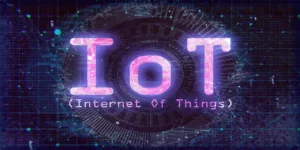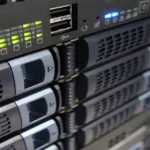By 2022, our planet will be home to three times more connected devices than people. Are we ready? Not even remotely.
The issue is far greater than a hacked jeep here and a breached baby monitor there. It’s not even that nearly a quarter of rural Americans and around a third of those living on tribal lands lack broadband access. The problem is that, for the most part, IoT innovators are focused on specific devices rather than the larger ecosystem.
Industry players have done little to prepare for connected homes. In a few years, hundreds of devices will be vying for bandwidth in every home. 802.11ax, also called Wi-Fi 6, promises to ease congestion on home networks, boosting speeds by five- or ten-fold, but speed is a small part of the picture.
Hundreds of devices mean hundreds of access points to protect. It means giving visitors access to, say, the sound system but not the security system. It means dozens of device providers, each of which doesn’t want to support competitors’ products. It means remembering to charge all those devices — or at least the portable ones.
What Smart Homes Are Missing
For smart homes to live up to their name, the IoT market needs:
1. Adaptive WiFi
Without connectivity, the smart home has no brain. Unfortunately, it doesn’t take much to sever the connection: Interference, congestion, and security risks can all create downtime. That might not matter when it interrupts your favorite song, but what about your smart locks? What about your doorbell camera?
The answer is a network-level approach like the one being taken by Plume. Plume’s software-defined network adapts as devices are added and removed or the physical environment changes. One upside of that is additional access controls: Without creating separate networks, Plume users can restrict certain devices from using the internet at certain times.
2. Truly wireless charging
Smartphone manufacturers have sold wireless charging devices for years that, while technically wireless, don’t deliver on their implied promise. Known as inductive chargers, they require the user to place their device directly against the charging pad. In short, the device still has to be physically attached to its charger.
Although it isn’t ready for the market yet, Energous showed WattUp, a wireless transmitter and receiver at CES 2019. Energous says a smartphone manufacturer is interested in the technology, though it won’t disclose which. Over-the-air charging will be even bigger, however, for smart homes. Homes are full of portable devices, from hair dryers to hearing aids to lawnmowers, that consumers shouldn’t have to worry about keeping charged.
3. Proactive vulnerability protection
In addition to providers like Plume developing AI tools to monitor home networks, startups like VDOO are focused on discovering zero-day vulnerabilities. The Israeli startup recently raised $32 million to use machine learning to learn what device-level security flaws look like, enabling it to discover new vulnerabilities.
How VDOO’s solution performs in the real world is an open question, but it’s one that consumers and manufacturers both think needs to be addressed. Security software company Gemalto recently released a report showing that 97 percent of companies see IoT security as a competitive differentiator, while 62 percent of consumers believe IoT security should be better. Customer experience experts agree, arguing that it’s a key reason IoT adoption isn’t stronger.
4. Interoperability standards
If you’re frustrated when your Apple devices won’t read Windows files, wait until every tech company on the planet is vying for position in the smart home space. But incompatibilities aren’t just irritating: Interoperability is required to unlock 40 to 60 percent of the IoT’s economic potential, according to McKinsey.
Imagine you’re buying a smart fridge: one can send the car to the store for groceries; the other can preheat your oven. Without a single set of interoperability standards, such as those proposed by the European Telecommunications Standards Institute, tomorrow’s IoT consumers could face hard choices like that. Essentially, ETSI designated an API that would enable all “things” using it reference one another and understand how they’re connected.
No matter what IoT marketers might have to say about it, we’re a long way from a truly connected world. There are plenty of smart devices in need of development and iteration, to be sure, but IoT leaders risk missing the forest for the trees. The bigger picture — one that device manufacturers and consumers have a joint interest in painting — is an IoT ecosystem in need of innovation.








